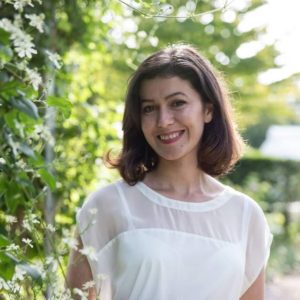
Satenik Khachatryan is an early childhood educator with a lot of experience under her belt. Her master’s degree on the subject carries the seal of not one, but four prestigious educational institutions: University of Gothenburg, Oslo University College, University of Malta and Dublin’s Institute of Technology. But she’s got more than fancy degrees. She’s been working for World Vision in various capacities for years before she started her own initiative: My Agri Summer Camp.
So why would a seasoned professional who probably knows your children better than you do drop her promising career to move back to Armenia’s Gegharkunik province? “When I was studying in Sweden, I was in touch with the small Armenian community there. The lack of Armenian schools, community centers and other vital institutions offered a real danger of losing touch with their Armenian roots,” she explains. However, she did like one thing about children’s upbringing in Sweden: “Throughout the Nordic countries, children are always outside. They grow to be comfortable with, and even love nature,” she told me.
Her experiences abroad gave her a remarkable idea: why not combine both an appreciation for Armenian culture AND nature? It wasn’t long before she trekked to her ancestral home in the ancient town of Chambarak nestled along the banks of Lake Sevan, to clear out a plot of land for what would soon become “My Agri Summer Camp.”
“My family owns the land,” she says, “and everybody helped out.” The idea was pretty simple: create an outdoor one-week long summer camp program which would bring together children from all across Armenia along with children from the Diaspora. The local children would learn from their newfound international friends, while their peers would have the unique opportunity to be entirely immersed in Armenian language and culture—the kind of experience that would be hard to replicate for Armenians living in Bismarck, North Dakota or Bümfükk, Sweden. The camp schedule includes nature hikes, workshops, traditional Armenian cooking courses and seminars on the unique properties of plants found across the Armenian Highland. Also: no screens.
Rather than stay in cabins, the children remain fully immersed and live with the villagers, which gives them a chance to make a little extra income while creating long-lasting memories together.
Since summer camps are sort of a rare sight in Armenia (with the exception of several diaspora-organized events), there is no real regulatory body to supervise these projects. So, Satenik took it upon herself to directly apply Swedish regulations to her own camp, which include provisions for an on-site clinic with a licensed nurse, a 1:3 adult to child ratio, five daily healthy meals (including snacks) and other safety features.
Last summer, the camp opened its doors for the first time to campers between the ages of 11 to 17. Spots filled up within days of registration with some kids coming from as far as Rome and Los Angeles. “They loved their experience, and we loved having them,” she reminisces.
This year, Satenik has even more ambitious plans for the camp. As she says, “It takes a village.”


My son has participated last Summer and I am more thank happy for his great experience. This year too we are going to send him again as what he has learnt there he still remembers whith such a pleasant way that wants the Summer comes as early as possible to go back to Armenia to MYAGRISUMMER INTERNATIONAL SUMMER CAMP!